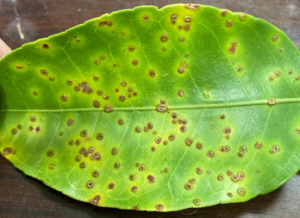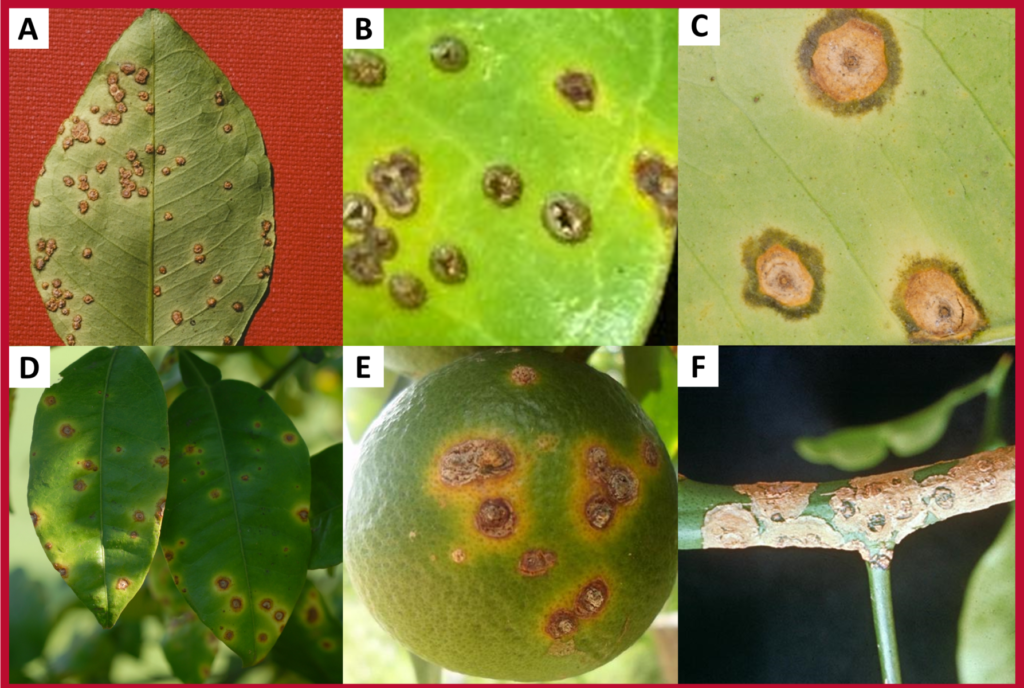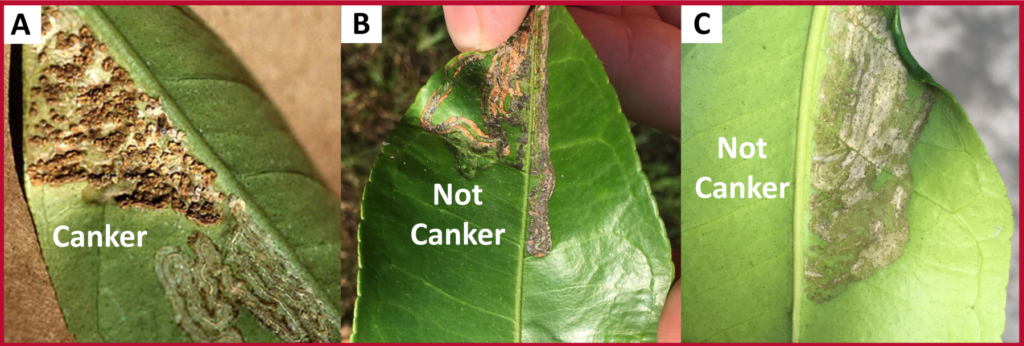Citrus Canker Disease Basic Info:

Citrus canker is a major disease of citrus that is caused by the bacterial plant pathogen Xanthomonas axonopodis pv. citri (Xac). While this bacterial pathogen is not harmful to humans, pets, or other animals, citrus canker can damage and reduce the marketability of affected citrus fruit and is subject to USDA-APHIS quarantine regulations. Citrus canker is widespread within Florida, and has also been found previously in Louisiana (2014), Texas (2016), Alabama (2021), and in a South Carolina nursery (2022). In June 2022, the Georgia Department of Agriculture announced that citrus canker has been confirmed within a commercial citrus grove in Decatur County, Georgia (Figure 1).
Symptoms of Citrus Canker:
Citrus canker primarily causes lesions on the leaves, stems, and fruit of citrus. Severe infections can cause defoliation, shoot dieback, and fruit drop, but these symptoms is relatively rare. Leaf lesions are raised pustules that occur on both leaf surfaces (though they may be more pronounced on the lower leaf surface) (Figure 2A). Eventually, the lesions become corky and a crater (sunken area) may be present in the center (Figure 2B). A water-soaked margin may develop around the necrotic tissue (Figure 2C), and a yellow halo often surrounds the lesions (Figure 2D). Lesions on fruit (Figure 2E) and stems (Figure 2F) are visually similar to leaf lesions.

Host Range of Citrus Canker:
Grapefruit and trifoliate orange are considered highly susceptible to canker, while lemon, sweet orange, and sour orange are considered moderately susceptible. Mandarins and satsumas are considered to be tolerant or moderately resistant. Nonetheless, even satsumas and mandarins can become easily infected if wounds are present, such as those caused by the citrus leafminer – a very common insect pest of citrus (see below).
Citrus Canker Spread:
The pathogen that causes citrus canker can be spread easily from tree-to-tree and/or between groves by wind-driven rain (including tropical storms and hurricanes), overhead irrigation, human movement of infected plant material, movement of contaminated equipment within and between groves, and by movement of humans, birds, and other animals. In particular, the citrus leafminer can create openings that allow for infection with the citrus canker bacterium (Figure 3).

Diagnosis and Testing for Citrus Canker:
Due to the potential for citrus canker to spread between infected trees and groves, and its potential to impact the marketability of fresh citrus fruit, Georgia citrus growers (both commercial and residential) are strongly encouraged to scout their trees for any signs of citrus canker. If canker is suspected, growers should contact their local University of Georgia Extension Agent for more information about citrus canker diagnosis and testing. Since this bacteria does not systemically infect citrus trees (meaning it may be present on some parts of leaves or fruit without being present elsewhere on the same tree), any samples selected for citrus canker testing should show symptoms of citrus canker.